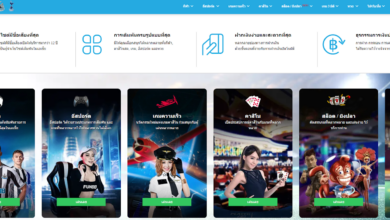The State funds education in Spain. It is mandatory for children between 3 and 16 years old. The parents or legal guardians must pay for school materials, textbooks, uniforms, and other supplies. There are generally three types of schools: public ones financed mostly by the State, private ones financed internally, and concerts which receive a portion of the money from one source and another. After completing the compulsory stage, students can continue to study at the same institution in the Baccalaureate Cycle or move on to Vocational Training at an intermediate level.
The university can only be accessed by those who have completed the Baccalaureate or higher levels of Vocational Training. Do you want to learn Spanish fluently, Because some students are weak in Spanish? Then you can learn with apps and websites. There are bundles of apps and websites for learning languages. italki Spanish teachers are the best for learning Spanish. You can learn Spanish and other languages on this website: italki.com. We will then learn more about the Spanish educational system and its various levels.
Early Childhood Education
The Early Childhood Education stage in Spain is split into two periods. The first period lasts from 0-3 years and is optional. Families must pay for part or all of the course funding. The second cycle, which lasts between 3 and 6 years, is mandatory. Public or unpaid options are also available.
Primary Education
Spanish primary education is also known as school. It can be divided into six academic courses. Its purpose is to provide a solid foundation in language, culture, oral expression, writing, and calculation for all Spanish students. It follows a playful approach to education. Cognitive and social development is at the heart of it. The most common distribution of the schedules is in one way. Some centers offer classes from 9:00 a.m. until 5:00 p.m. with a two-hour break between 1:00 and 3:00. Others prefer an intensive day starting at 8:00 a.m. and ending at 2:00 p.m. when they all go out for lunch.
Compulsory Secondary Education
Students in Compulsory Secondary Education (ESO) Spain are between 12 and 16 years old. Students must complete this stage for four years. If a student repeats the course and is 16 years of age, he may drop out if he chooses. This stage is designed to help students develop their critical thinking skills, learn how to work in a team, and build their self-confidence.
BACCALAUREATE
Although the Baccalaureate does not count towards compulsory education, more and more people are earning it. They can be obtained in two academic years following ESO. The program focuses on acquiring more specific knowledge in the chosen area: art, science, technology, and the humanities. These courses allow students to apply directly for the university entrance exam or to a higher level of Vocational Training.
Intermediate Or Higher Level Vocational Training
Vocational Training in Spain prepares students for certain occupations. It generally lasts for two years. There is a mandatory period of internships in companies where the student can apply what he learned in class to his daily life.
What differentiates mid-level Vocational Training from higher-level vocational training? It is the depth of the study of each course and the degree of specialization.
University: Bachelor’s, Master’s, Doctorate
Spanish university degrees generally last four years, except for a few specialty programs that can take longer. All of them bear the name of the Degree along with the specialty they correspond to (Degrees in Early Childhood Education, History of Art, Psychology spain.
After completing the four-year degree, the student can continue to a master’s or doctorate. The whole university stage is voluntary, and the student pays all the costs. The tuition price in public universities is usually lower than in private ones. The Spanish public universities are well-known for their international reputation. Among others are the Autonomous University of Madrid and the Autonomous University of Barcelona.
Public Education
The public type of education, controlled and provided free by the State, is the first. It is a fact that public education in Spain, and all public school facilities, is of high quality and excellent standard. Students have plenty of material, and buildings are well maintained. Choosing public education means that your children will receive a quality education and care at a low cost. Bilingual educational centers will offer classes in Spanish and English. Imagine that you live in a community with its own language, like Catalonia. The training will be given in Catalan with English and Spanish subjects. Public schools are secularist, with no religious education. Christian holidays are celebrated (with Christmas and Easter). There may be a subject that can make the world’s religions more well-known. Still, it is important to keep an objective and critical viewpoint. Another benefit of public education is the continuous training of teachers, which can lead to better-prepared teachers.
Private Education
Private education is the opposite of public education. Price is the main issue: Prices start at EUR500 monthly and can go up to EUR2,000. But, this price might be justified.Private schools are more likely to innovate because they get more income each month from their parents (monthly payment). Private schools have more investment and margin to invest in new technologies. Private schools also recommend, learn Spanish online for new students, who belong to other countries. They also can incorporate more sophisticated methods that are more expensive. You also have the option to select schools that meet your needs. You can also find religious schools that teach Christian values. You can also enroll your children at a school that follows the British, French, or German systems. Most classes are taught in those languages (Spanish). This is a great alternative to creating a professional profile that includes the language level of your children.

 How to Generate your E-Shram Card? Apply Online
How to Generate your E-Shram Card? Apply Online The Impact of Advanced SEO Techniques on Online Visibility
The Impact of Advanced SEO Techniques on Online Visibility Emirates Multi-City Flights Are Cheaper or Not?
Emirates Multi-City Flights Are Cheaper or Not? What Makes FamiSafe A Perfect Choice For Your Child Safety
What Makes FamiSafe A Perfect Choice For Your Child Safety How Technology is Changing Long-Distance Moving
How Technology is Changing Long-Distance Moving The Role of Certifiers in Commercial Development
The Role of Certifiers in Commercial Development Fun88 รีวิวเว็บคาสิโนออนไลน์ ใบอนุญาต ฟีเจอร์เด่น พร้อมแชร์ทางเข้า Fun88แท้ อัพเดทใหม่
Fun88 รีวิวเว็บคาสิโนออนไลน์ ใบอนุญาต ฟีเจอร์เด่น พร้อมแชร์ทางเข้า Fun88แท้ อัพเดทใหม่ Everything You Need To Know About The Champions League Final
Everything You Need To Know About The Champions League Final